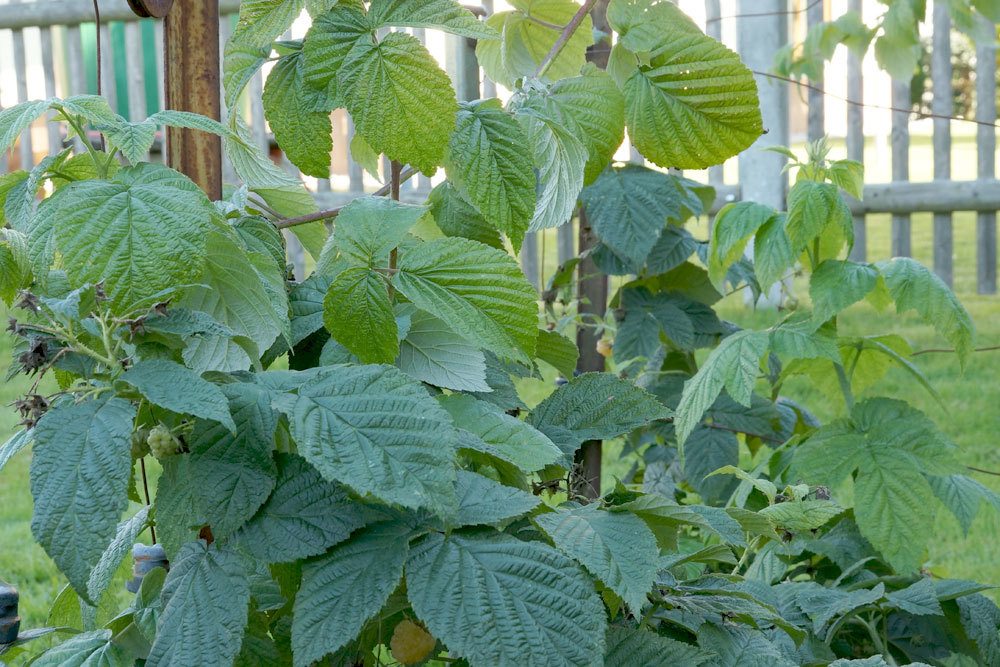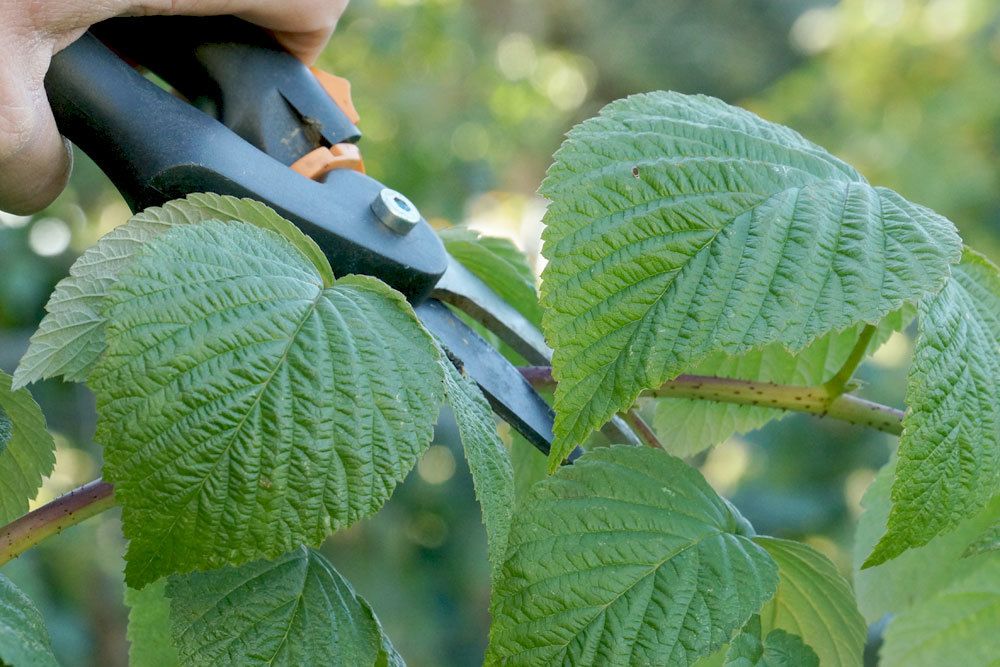Last updated on October 23rd, 2023 at 08:30 pm
Their sweet great taste and pretty red color are the reason that the raspberries are so popular. Fortunately, the delicious fruit can also be planted in the home garden. To achieve a high yield, the optimal care is very important. In this regard, pruning plays a crucial role. In the first place, the bushes would only spread in terms of area without pruning the canes. But when is the best time to prune and what is there to consider?
Contents
Pruning as plant protection
Regular pruning – the best plant protection for raspberries.
Raspberries are very hardy, so healthy plants can cope well with radical pruning. However, since the bushes are susceptible to pests and diseases, the canes should never be too close together, but rather more than too few shoots should be removed.
By pruning the shoots, the shrub will continue to bear fruit abundantly the next year. When this is done depends on whether it is summer or autumn raspberries. Pruning autumn raspberries is very simple, while the summer raspberries are somewhat more demanding, so when pruning need to follow some tips.
Pruning back autumn raspberries
Best time to cut back autumn raspberries:
- last harvest October to November
- then cut back all the canes close to the ground
- do not leave any remnants (optimal breeding ground for diseases)
- remove diseased shoots during growth
- cut down shoots that are too long
- thinning out perennials regularly
Prune for a second harvest of fall raspberries:
If a second crop is still desired in the spring, prune as follows.
- after the first frosts, do not cut canes close to the ground as in conventional pruning
- cut only the upper part, which had fruits on it
- leave lower parts of the cane (shoot parts) for another harvest in early summer
However, this harvest will be much smaller and shorter. Canes left standing for the purpose of a second harvest often pose a risk of disease. In addition, raspberry plants are significantly weakened by the second harvest and are less productive, so it makes sense to grow fall and summer varieties.

Optimal time for cutting back the summer raspberries.
Summer raspberries, for example, Meeker, Rubaca and Schoenemann, are harvested by the end of July. Immediately after that, pruning should be done. The procedure is as follows.
- Cut back to the ground those canes that have borne fruit
- carefully pull out of the trellis or scaffolding to which they are attached
- leave about five young rods from the year and tie them to the trellis framework
- cut canes that are taller than two meters down to two meters
- thin out canes that are too dense and shorten them if they are too long
- remove weak, damaged and diseased shoots
There should never be more than ten shoots per meter, so that the raspberries can spread and fungal diseases are not transmitted. If pruning is done immediately after harvesting, it is still easy to distinguish the young shoots from the old ones, as the young ones are greener than the dark two-year-old ones.
Avoid diseases through proper pruning
Despite the robustness of raspberries, the plants can be prone to various diseases, so do not keep too many canes in one place. These include, for example.
- Root rot
- Rod disease
Heavy pruning reduces the risk. Despite all precautions, disease can still occur. Diseased raspberries must be removed. This should be done through household garbage, not compost, to prevent spread of disease to other plants. After pruning the soil should be fertilized.

What is needed for cutting the raspberries?
- sharp secateurs for the thin shoots
- small saw for the thick shoots
- protective gloves
- possibly a garden shredder
Tips for pruning
General tips for pruning raspberries
It is important to use only sharp tools and wear protective gloves. It is recommended to use ergonomic pruning shears with sharp blades and non-slip handles. The hands and joints will not be so stressed. The canes must not be crushed during pruning.

A smooth cut is important, otherwise infections with diseases can easily occur. Blunt blades or saw blades are also a danger of accidents because of the ease of slipping. At the leaf axils, many raspberry varieties bear thorns that can significantly injure the skin. Gloves also protect against the bites of insects that live in the raspberry bushes.
Where to put the cut canes?
- healthy shoots of raspberries ideal mulch material
- shred by hand or more conveniently in a shredder
- spread under the trees and bushes as a mulch cover
- other possible uses: as a base for raised beds or loosening material for the compost
- when cutting autumn raspberries, leave two canes per meter of row and lay them on the ground above the roots (winter quarters for the useful garden inhabitants)
- dispose of diseased canes (in the regular garbage can or burn them)
Gardeners who plant raspberries and then leave the bushes to their own devices quickly run into a problem because of the wild growth. Therefore, regular pruning is very important. Here it is necessary to pay attention to whether it is summer or autumn raspberries, because the optimal time of pruning depends on it.
For summer raspberries it is immediately after harvest in late July. For autumn raspberries, the perfect time for pruning is October to November. If you take the above tips to heart, you will enjoy raspberry bushes for a long time and enjoy aromatic fruits. Thanks to the ingredients they are true health and power fruits.


